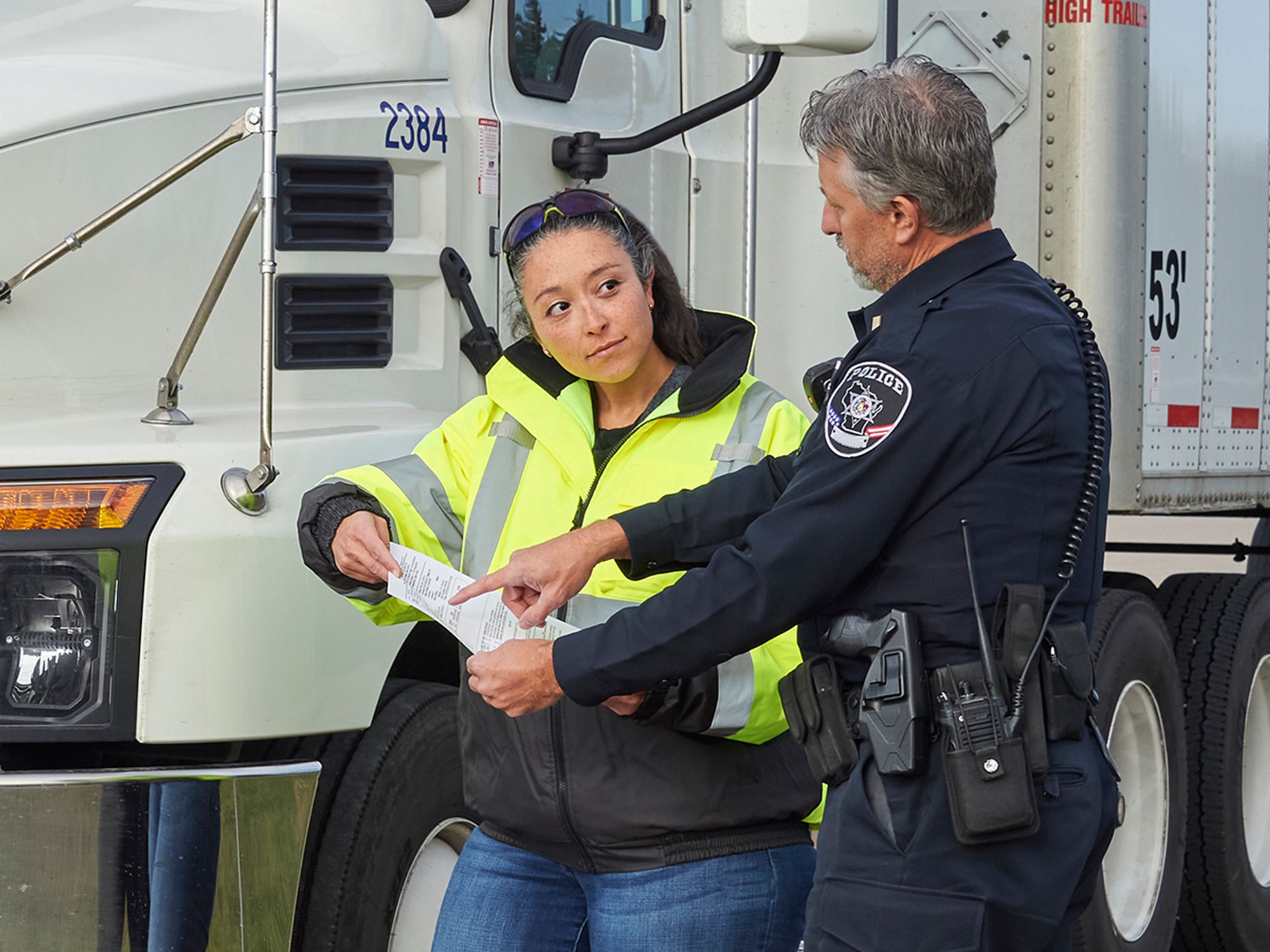InstituteFleet SafetyIn Depth Sub Topics (Level 4)Out-of-service criteria - Motor CarrierTransportationEnforcement - DOTEnglishRoadside InspectionsAnalysisFocus AreaUSA
Verifying documents
['Enforcement - DOT']

- With regards to carrier credentials, the officer will check the carrier’s DOT number and UCR for the existence of an out-of-service order, for valid for-hire authority if acting as a for-hire carrier, and the correctness and validity of the vehicle’s required credentials.
- With regards to the driver, the officer will “run” the driver’s license to get an MVR, verify that the driver is medically qualified and is complying with any medical requirements (i.e., glasses or contact lenses), and verify that the driver has the proper exemption if the driver has a condition that is normally disqualifying (e.g., a skill performance evaluation certificate if the driver has an amputated limb).
During this part of the inspection, the officer is doing more than it appears. The officer is beginning to determine who the carrier is based on the driver’s interview and the documents provided (vehicle registration, driver’s log, shipment paperwork, etc.) and whether the vehicle might be transporting hazardous materials.
The officer will verify the various documents, as well as the carrier and driver qualifications. Related to the carrier itself, the officer will verify that:
- The carrier’s DOT number is current and not inactive,
- The carrier is not under an out-of-service order,
- The carrier’s Unified Carrier Registration (UCR) is current (if an interstate carrier),
- The carrier has valid for-hire authority if acting as a for-hire carrier, and
- The vehicle’s required credentials are correct and valid.
Related to the driver’s documents and qualifications, the officer will:
- “Run” the driver’s license to get a motor vehicle report (MVR) and verify that the license is current and valid. The officer will also note the class, endorsements, and restrictions on the license and compare this information to the vehicle the driver is operating. To determine if a commercial driver’s license (CDL) is required, the officer may check the vehicle’s weight rating.
- Verify the driver is medically qualified. If the driver is a CDL driver, this will involve verifying that the medical information listed on the driver’s MVR is current. If the driver is a non-CDL driver, this will involve checking the driver’s medical card. The officer will look over the medical card line-by-line to make sure it is correct and not fraudulent.
- Verify that the driver is complying with any medical terms listed on either the license or the medical card. As an example, if either one says the driver is required to use corrective lenses, the officer will verify the driver is wearing either glasses or contacts.
- Verify that the driver has the necessary exemption if the driver has a condition that is normally disqualifying. The officer may ask the driver for skills performance evaluation paperwork if the driver has an amputated limb.
